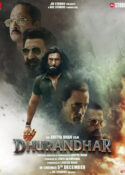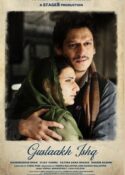
How do you rate a piece of art that can as inadequately be defined as cinema as the paintings on the roof of the Sistine Chapel as ceiling decoration? How do we go about slotting and defining a film as passionate and intense as The Passion Of The Christ? Is it a Biblical fable like Cecil de Mille’s epic The Ten Commandments or funky like Norman Jewison’ Jesus Christ Superstar, or raw-and-riveting like Martin Scorsese’s The Last Temptation Of Christ. In pursuit of the last twelve hours in the life of Jesus Christ as he is whipped, flogged, lacerated and dragged with the cross before being nailed , the writer-director Mel Gibson takes us into the soul of the sublimest suffering of civilization as inflicted on its sporadic saints and saviours.
The inbuilt temptation of depicting gruesome and graphic violence is to have the camera stand witness in gloriously voyeuristic wonderment. The Passion Of The Christ looks at the horrific tragedy of Christ’s crucifixion neither from the female nor the male gaze.
It’s all in the pain gaze. As Gibson, the director(skilled beyond all defintions of excellence) takes a long lingering and damning view of the tragedy we become one in the rites of savage salvation.The narration is so stark brutal and blunt we feel every whiplash that falls on the gaunt saint’s bare uncomplaining yet writhing back.
In terms of extended pain The Passion Of The Christ goes beyond any cinematic work witnessed from anywhere in the world. Christ’s torture in the holy city of Jerusalem has no parallel in the history of mankind, and that is how Gibson chooses to depict the mob fury and the brutal attack on a man who claimed to carry God’s message on earth.
Often, you feel Gibson is on the verge of romanticizing Christ’s torture and pain. He always turns back just in time. Neither judgemental not holier-than-thou the director follows Christ from the silvery jungles where he is betrayed by Judas and captured by his powerful adversaries, to the end when nailed to the cross bleeding battered and bruised beyond all powers of human endurance, he loses his faith in God “but just for a second”.
The Passion Of The Christ is a mesmerizing, hypnotic, therapeutic, and cathartic treatise on suffering and redemption. You connect instinctively and indelibly with the film not just as a great work of cinematic art, but also as a treatise on human savagery. The mob fury vented against an extraordinary man who threatens the status quo which would seem like an ancient fable to the Westerners. For us in under-developed countries the mentality isn’t a myth. The palpable and unpalatable truth of human aggression floods the veins of this robust masterpiece with a sanguinary fluidity.
You flinch at every blow that Christ suffers. You watch his blood oozing out stroke by stroke, you watch men with eyes glinting like jungle animals hunting down their preyAnd you watch this pale and gaunt man pray for his tormentors. As a nail is driven into his hand and Christ asks God to forgive the sadists , your heart is suffused in a silent wonderment.
Director Mel Gibson gives the film the texture and flavour of tribal violence. And yet beneath the surface savagery you constantly hear the music of the unviolated soul in the hero’s all-forgiving heart. Is it just the sound of John Debney’s stirring music echoing the rhythms of the soul? Or is it more? No film in recent or distant memory has gone so profoundly and excruciatingly into the anatomy of suffering. Shekhar Kapoor’s Bandit Queen made the audience a horrified participant in the protagonist’s brutalization. Mel Gibson makes us both the accomplice and the repudiatory of unmentionable crimes against humanity.
We walk that acutely painful mile with the wounded saint, and yet we, the mute spectators, are guilty of bringing that pain on the soul. Gibson’s poetry on the enigma of the soul is raw and mystical, revolting and yet ravishing. The gaping wounds on Christ’s body are so real we want to run up with a healing touch, just like the woman in the frenzied crowd who braves the savage soldier’s wrath to offer water to the dying Christ in the last lap of his journey.
There are images in the film that replicate the music of the spheres in visual terms. Every one will walk away after crucifixion with his own favourite moment of pain. Mine comes just after the intense and incessant flogging when Christ’s mother Mary(Maina Morgenstern) wipes the beloved blood with the spotless cloth.
In moments such as this, Gibson bathes us in a metaphorical shower. And yet here lies the true triumph of the director’s artistic spirit: the narration never loses sight of the optical brutality of the event. While we watch Christ’s demented persecution we also look at the much larger universally contemporary picture of a sickened mankind which over the centuries has only forfeited more of the very essence of existence for which Christ gave his precious life.
What can we say about the film’s technical and geo-political acumen without taking away from Mel Gibson’s miraculous and magical vision? Caleb Deschanel’s cinematography transports us back to the biblical era without an iota of selfconsciousnes. The characters all seem to have existed long before Deschanel reached with his luminous lenses. The performers all enact their parts with an un-pregoverned fluency do the rest.
Maia Morgenstern as Mary fliches with her eyes each time another blow falls on her beloved son. Flashbacks of happier mother-child moment are temperately used never to evoke sentimentality but to provoke a reaction against the futility of the fury. As for James Caviezel ,his performance seems as blessed by divinity as director Gibson.
Together the actor and director have created a timeless imperishable and heartstopping work of art that will outlive most of the more expansive and expensive epics that make a selfconscious plea for healing humanity. Very very few films have the power to change lives and revise our emotions.The Passion Of The Christ is a brutally violent film and yet almost Gandhian in its subterranean sublimity. Though the film is in Latin, not for second do we feel we are listening to an alien tongue. It is not in the words that they say, but in the emotions that underline those words that we find our most valuable relevances.








